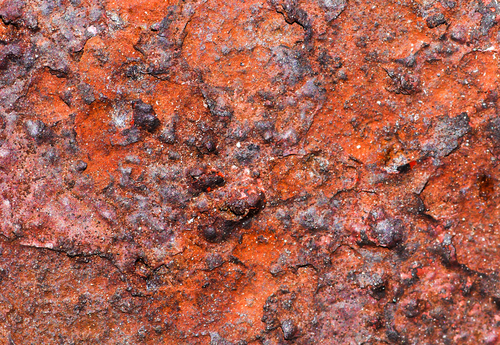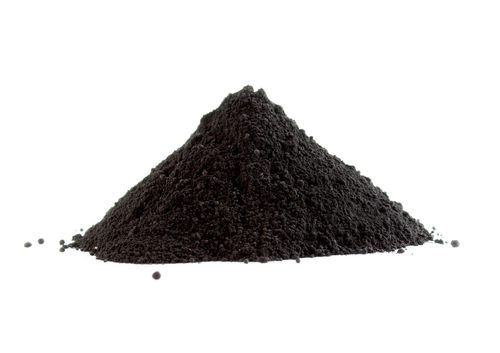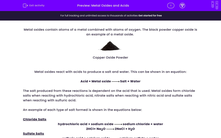This activity is all about metal oxides.
You may think that you've never come across these, but you will have done even if you didn't know! Have you ever found rust on your bike because you left it out in the rain? Rust is actually iron oxide, where the iron in the bike frame has reacted with oxygen in the air to produce iron oxide. Hopefully, your bike wasn't as rusty as the piece of metal below!

Metal oxides contain atoms of a metal combined with atoms of oxygen. The black powder shown below is copper oxide:

Metal oxides react with acids to produce a salt and water. This can be shown in an equation:
acid + metal oxide![]() salt + water
salt + water
The word 'salt' can be confusing because we use the term to describe the salt that we put on our food. This type of salt is actually sodium chloride, but there are many other types of salts that can be created too.
.jpg)
The salt produced from these reactions is dependent on the acid that is used. Metal oxides form chloride salts when reacting with hydrochloric acid, nitrate salts when reacting with nitric acid and sulfate salts when reacting with sulfuric acid.
An example of each type of salt formed is shown in the equations below:
Chloride Salts
hydrochloric acid + sodium oxide![]() sodium chloride + water
sodium chloride + water
2HCl+ Na2O![]() 2NaCl + H2O
2NaCl + H2O
Sulfate Salts
sulfuric acid + calcium oxide![]() calcium sulfate + water
calcium sulfate + water
H2SO4+ CaO![]() CaSO4 + H2O
CaSO4 + H2O
Nitrate Salts
nitric acid + copper oxide![]() copper nitrate + water
copper nitrate + water
2HNO3+ CuO![]() Cu(NO3)2 + H2O
Cu(NO3)2 + H2O
It is important to learn the formulae of the acids, as they are the three most commonly used acids in the science lab.
Let's have a go at some questions now.








